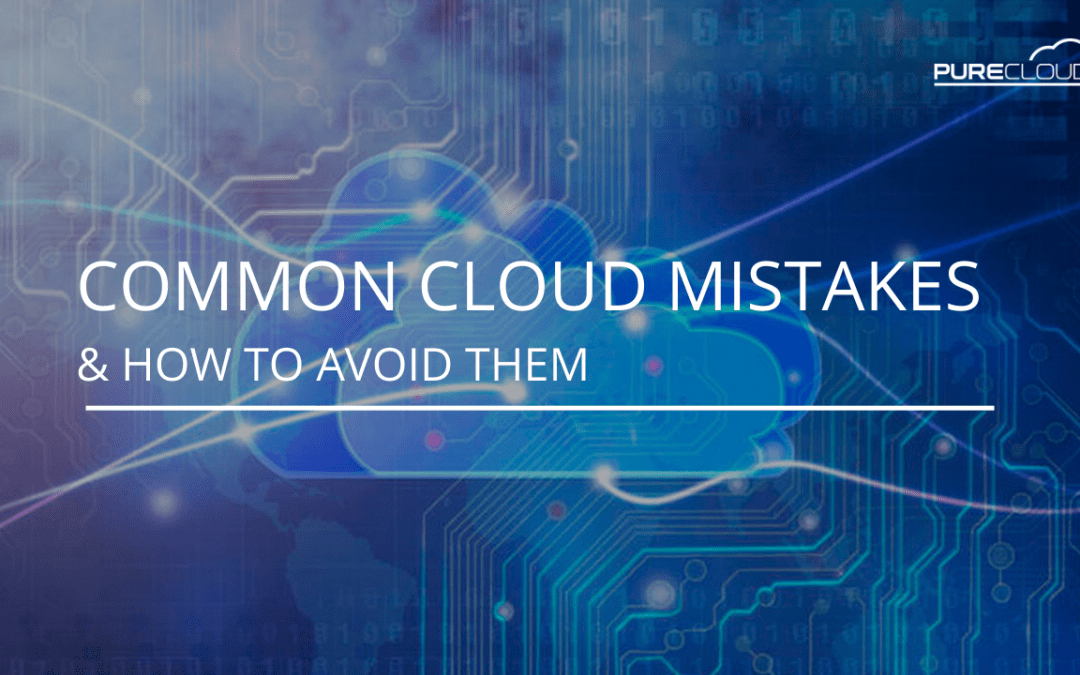Cloud computing is the use of networks of remote servers to store, manage and process data – all of which can be accessed via the internet.
The shift towards the cloud is happening quickly and showing very few signs of slowing down.
Instead of having to maintain a large and complicated in-house computer infrastructure, organisations can now store everything they need in the cloud.
But it is essential to know how to properly set this up and to manage your cloud service options effectively.
Although moving to the cloud comes with several benefits for both your business and employees, it isn’t without risk. Here are a few common cloud mistakes and what you can do to avoid them.

Giving too much access to employees
When migrating to the cloud, organisations responsible for storing sensitive data, could be a target of cyber crime due to potential vulnerabilities.
Cyber criminals are always looking for new ways they can hack your network and because the cloud has so many different applications you can open more back doors for them to try and access.
How to Avoid:
Give only essential users access to data that is stored in the cloud, to maintain as much privacy and security as possible.
This can be done by implanting role-based security that controls access to any sensitive data.

Poor connectivity
Organisations can often overlook how important it is to have reliable and efficient connectivity when migrating to the cloud.
Yet cloud services rely solely on having internet access in order to work. Without reliable internet connectivity you can face reduced productivity and your company’s data could be compromised.
How to Avoid:
Be sure to work with reputable service providers that will ensure any decisions made will not disrupt or create a negative impact on your organisation’s workflow.
Investing in reliable internet connectivity that suits your organisations needs is key to optimising cloud services in your business. Don’t underestimate it’s importance.

Relying on buIlt in security products
Most cloud operations offer built in security products, which can be either free or low-cost and easy to deploy – offering a good overall cloud strategy. However, a lot of organisations tend to rely on these products alone for internet security.
The issue with this is that although they offer basic protection, they are not reliable enough to provide a complete and comprehensive security solution for organisations. These products are good at blocking basic cyber threats but are unable to identify sophisticated threat and detect them before they become a problem.
How to Avoid
To ensure a robust security solution we recommend investing in a more advanced security software to work alongside any built-in cloud security.
For example, Cisco Umbrella offers seamless protection wherever your users go. It can easily integrate with your existing security stack and give you live threat intelligence about current & emerging threats.
Choosing the wrong provider:
If you are deciding to migrate to the cloud, take into consideration the costs that come before, during and after the implementation.
It’s important that you are monitoring your costs as they can easily accumulate and assuring you’re on a contract that suits your business needs is one that requires extensive research and time.
How to Avoid:
When considering your cloud providers do your research. Look for providers that offer you transparency into the cost of use and ensure that they can migrate and deploy cloud services that suit your business needs. If you don’t constantly monitor this you face spending money on unnecessary services.

MOVING TO THE CLOUD?
Our experts can migrate, deploy and implement cloud services, supporting you and your business every step of the way.
Get in touch to see if we can help. If we can – we will. Call us on 0333 150 6780, email us on or fill out the contact form below and a member of the team will be in touch.





Recent Comments